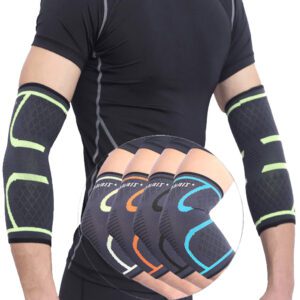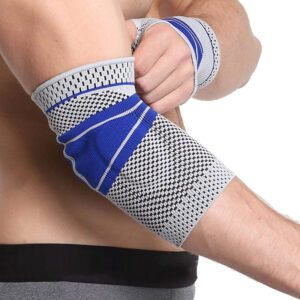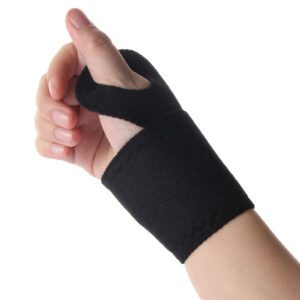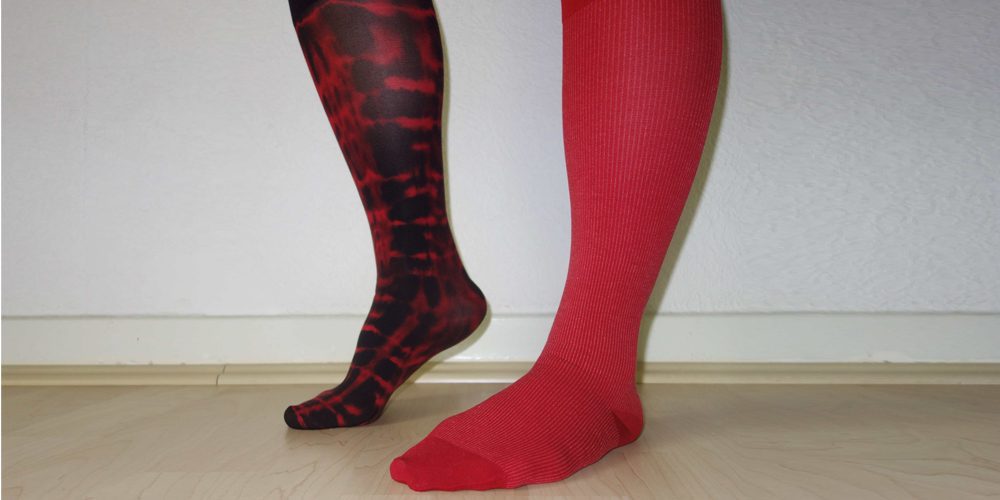Morton’s neuroma is a benign tumor of the nerve that leads to your toes. It can be painful, but it usually isn’t dangerous. The condition may go away on its own or with treatment. But if you leave it untreated, the cause of the pain could become more serious and permanent damage could occur. Here’s what you need to know about Morton’s neuroma, including symptoms and treatments.
What is Morton’s Neuroma?
Morton’s neuroma is a pain in your foot. It is caused by the nerve that goes to your toes. The reason it hurts so much is because of pressure on the nerve. You can feel this pain all over the bottom of your foot and even in your toes, but most people say they feel it more in their toes than in their feet.
Morton’s neuroma most often develops between the 3rd and 4th toe, although it can happen at any point along the nerve going to those toes. A most common way that Morton’s neuroma occurs is through irritation or damage from an injury or trauma to a specific area on the nerve going to those toes.
A neuroma is a medical term for a swollen area of tissue surrounding one of your toes’ nerves. This might cause intense, burning pain in the ball of your foot. The affected toes may be stinging, burning, or numb. For other people, it may only feel like walking on a marble or a fold in your sock.
The incidence of Morton’s neuroma for women is 8 to 10 times greater than that for men. This is because women are more likely to have experienced some sort of injury, trauma or irritation of the nerve on their forefoot due to wearing ill-fitting shoes or uncomfortable footwork that puts a lot of pressure on the foot.
Morton’s Neuroma: Symptom Checklist
Symptoms of Morton’s neuroma can vary greatly, but there are telltale signs of this condition. Symptoms include:
- Pain directly under the ball of your foot (especially towards the outside)
- Tingling or numbness in one or all toes (although it is most commonly felt in the 3rd and 4th toes)
- Shooting pain through one or more toes when you press with your thumb above where it hurts (located underneath your metatarsal bone)
- Increased pain when wearing shoes or walking
- Swollenness in the area; skin thickening in the area (the skin will begin to thicken when it is constantly irritated)
- Feeling like standing on a marble or pebble in your shoe
When runners push off from the start, they may feel discomfort. High-heeled shoes, which place the foot in a similar position to that of the push-off, can also irritate it. Tight, narrow footwear also aggravates this problem by compressing the toe bones and pinching the nerve.
You may not experience any discomfort if you have a Morton’s neuroma. In 2000, researchers looked at medical records of 85 people who had their feet imaged using magnetic resonance imaging (MRI). The research discovered that 33% of the participants had Morton’s neuroma but no pain.
Causes of Morton’s Neuroma
Shoes that are too tight or have high heels are the most common cause of Morton’s neuroma. These shoes can strain or irritate the nerves in your feet. As a result of the pressure on it,
A foot or gait abnormality, which can cause instability and put pressure on a nerve in your foot, is another possible reason.
The most common causes for Morton’s neuroma include:
- Ill-fitting shoes. Since this condition is usually caused by pressure on the nerve, wearing shoes that are too tight or narrow can irritate the nerve.
- Trauma to your foot. This may include an injury from bumping or striking your toe against something, dropping something heavy on it, getting hit with a ball, running into or hitting someone’s foot, accidentally dropping a heavy object, or kicking a wall.
- Sports that require tight shoes. Skiing or ballet dancing are only two examples.
- Flat feet. Morton’s neuroma can sometimes develop in people who have fallen arches.
- Wearing high heels often or for long periods of time. Morton’s neuroma can occur if you wear shoes with high heels more than 50% of the time.
- High arches. The constant pressure from putting too much weight on the foot can irritate a nerve.
- Inherited conditions, such as hereditary sensory autonomic neuropathy and Charcot-Marie-Tooth disease (CMT). These conditions cause damage to your peripheral nerves. In these cases, Morton’s neuroma can develop in people who don’t have a disorder that directly affects their nerves.
- Bunions. A bunion is a bony bump that forms on the big toe joint at the base of your big toe. Bunions can cause problems with the way your shoes fit, which may irritate a nerve in your foot.
- Hammertoe. This is a toe that is bent at the middle joint. Those who have this condition are more likely to develop Morton’s neuroma because of pressure on the nerve.
- Activities that place pressure on the feet. Running, jogging, hiking or carrying shopping bags upstairs are just a few examples.
Diagnosis of Morton’s neuroma
Your doctor will press on your foot to detect a mass or tender spot during the examination. There may also be a sensation of “clicking” between the bones of your foot. Arthritis and joint inflammation will be ruled out through a variety of motion tests. To verify whether or not a stress fracture or arthritis of the joints that connect the toes to the foot exists, X-rays may be necessary.
Imaging tests may be necessary to diagnose Morton’s neuroma:
- Ultrasound. The ultrasound technology is capable of generating real-time representations of internal structures through sound waves. Ultrasound is ideal for detecting soft tissue disorders, such as neuromas.
- X-rays. Most likely your doctor will order X-rays of your foot to rule out other causes.
- MRI (Magnetic Resonance Imaging). An MRI scan also works well with radio waves and a strong magnetic field to show soft tissues. It’s an expensive test that often reveals neuromas in individuals who don’t have any symptoms.
Treatment, Home Remedies and Lifestyle Changes
Your doctor will most likely consider a non-surgical therapy first. The first step in rehabilitation is to utilize arch supports or foot pads for your shoes. These relieve pressure on the afflicted nerve. They can be OTC inserts or bespoke made by your doctor on prescription to match your feet. Over-the-counter (OTC) pain killers or nonsteroidal anti-inflammatory drugs, such as ibuprofen or aspirin.
Additional conservative treatments that you can do at home by yourself include:
- Physical therapy. Using special exercises to stretch the muscles in your feet can help loosen your tendons and ligaments.
- Electrical nerve stimulation. This therapy supplies pain relief by sending electrical impulses through your nerves to block the sensation of pain.
- Splinting at night. Sleeping with a splint will support your nerves and reduce pressure on them. It must be worn while sleeping for 1–2 months, even if you don’t feel relief right away.
- Shoe inserts: To place under the balls of your feet.
- Foot massage. Massaging your feet can help reduce the pain and swelling caused by Morton’s neuroma.
- Applying ice. Ice packs can reduce swelling and ease the pain. Apply ice to your foot for 15 minutes at a time, several times a day.
- Changes in footwear. A change in shoes may help if you’re wearing footwear with a high heel. A flat shoe with a wide toe area and arch support can be helpful in relieving pain and preventing further injury to your foot.
According to several studies, a combination of roomier, more comfortable shoes, nonsteroidal anti-inflammatory drugs, custom foot orthotics, and cortisone injections helps about 80% of patients with Morton’s Neuroma.
Your orthopedic surgeon may discuss surgical treatment alternatives with you if conservative therapy fails to alleviate your problems. The surgical treatment your doctor might suggest:
- Injections. If the pain doesn’t go away after a few days, your doctor may give you corticosteroid or anti-inflammatory injections into the painful region. Local anesthetic injections might also be used to numb the affected nerve. This could provide temporary relief from your discomfort.
- Neurectomy. If other methods of treatment don’t help, surgical excision of the tumor may be required. Although surgery is typically successful, it can result in permanent numbness in the afflicted toes.
- Decompression Surgery. Surgeons may reduce pressure on the nerve by cutting connective tissues, such as the ligament that joins together some of the bones in the front of the foot, in certain circumstances.
- Cryogenic Surgery. Nerves and the myelin sheath that is covering them is frozen and killed using extremely cold temperatures.
Recovery Time
The duration of your recovery will be determined by the severity of your Morton’s neuroma and the type of treatment you choose. Some people benefit from switching to larger shoes or shoe inserts, which provide fast alleviation. Others may require injections and painkillers over time in order to get relief.
Surgical recovery time is different for each person. Nerve decompression surgery has a rapid recovery time. You will be able to put weight on the foot and wear a cushioned shoe after the operation.
A neurectomy surgery is more complicated and takes longer to recover from than a simple clipping. The length of rehabilitation varies depending on where the surgical cut is made; it ranges from 1 to 6 weeks. If you make an incision at the bottom of your foot, you may need to use crutches for three weeks and have a longer recovery time.
In both cases, you’ll need to limit your activities and elevate your foot as often as possible. You’ll also have to keep the foot dry until the incision has healed. The surgical dressing will be changed in 10 to 14 days, according to your doctor’s instructions. How quickly you can return to work will be determined by how much standing on your feet is required.
Prevention
Wearing the right kind of shoes is the easiest way to prevent Morton’s neuroma. If you avoid wearing tight shoes or high-heeled shoes, this decreases the chance of getting Morton’s neuroma significantly.
Shoes with wider toe boxes and plenty of room for your toes are best suited for prevention. Orthotic inserts or cushion pads can work wonders for your feet. In general, listen to your feet. If you feel constant pressure after a long day, consider making a change.
Padded socks are a great help to reduce the pressure on your feet if you need to stand or walk a lot. There are even specific cushion mats that you can place under your desk or working space in your kitchen. They may provide the relief you need.
Stretches and exercises are always a good idea. Your joints and muscles will thank you for the extra time spent stretching. However, make sure you don’t stretch too much – this can actually make your neuroma worse.
Takeaways
The use of traditional medicine claims that 80% of the time, it provides relief to persons with Morton’s neuroma. No long-term clinical trials are evaluating surgical treatment outcomes, however, the Cleveland Clinic says that surgery alleviates or eliminates symptoms in 75 to 85 percent of instances.
Comparison of the outcomes of various therapy methods is severely limited. According to a tiny 2011 research, 41 percent of individuals who switched their shoes required no further therapy. Among those who got injections, 47% had an improvement and did not require any more treatment. 96% of patients who underwent surgery recovered.
I hope you enjoyed reading this article and could get some helpful tips. Like always, I’d love to hear your story, experiences and feedback. So please comment on the post below.





















